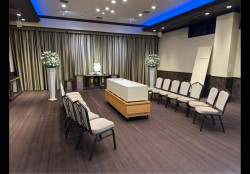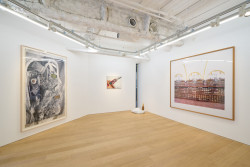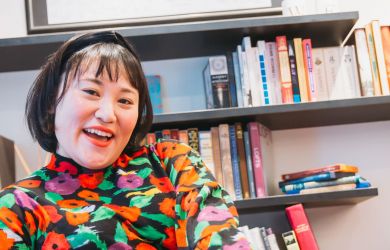
June 21, 2019
Connecting with Japan’s History
The shared journeys of a modern traveler, Meiji era diplomat and 14th century monk
By Derek Beddow
Motivated by my fascination with history, I arrived in Japan with little more than the inside knowledge I had picked up from the writings of Ernest Satow, a British diplomat who lived in Japan over 100 years ago, and Bassui, a 14th century Zen monk. So much of the visual landscape has changed since their time.
I was on my way to Kamakura as I knew Bassui had visited the temples Enkakuji and Kenchoji in Kita Kamakura. On the 30-minute journey from Yokohama I felt a sense of excitement, much like Satow journeying into the interior of Japan. The Yokosuka Line snaked its way around high rises hugging Yokohama Bay. I caught a glimpse of the Bluff, the section of Yokohama that foreigners were allowed to live in during Satow’s time, and where the foreigners’ cemetery is found.
In Satow’s time, foreigners had to abide by the Treaty of Limits, not allowed to venture more than 25 miles inland from Yokohama, unless special permission had been granted. All the main roads had strictly guarded barriers, where travellers had to show their travel permits. All pedestrians had the added burden of having to kneel down in the street when a person of high rank passed by.
Arriving at Kenchoji, I walked past huge mediation halls, marvelling at the overwhelming serenity of the location. Just beyond, hundreds of uneven stone steps led me to the Ten En walking course, which trailed all the way around the surrounding hills of Kamakura. I stopped and looked behind me to contemplate the height I had climbed.
A Buddhist monk, hidden down below in the grounds of the temple, began reciting sutras. The sound and view I was now looking down on would not have changed in hundreds of years. Satow and Bassui would no doubt have witnessed this very same scene. I felt blessed, being part of something so fleeting and at the same time eternal. Blessed to be alive. Blessed to be there at that moment in time. I recalled Bassui writing, “Even 1000 years of reading sutras is not equal to a moment of seeing into your own nature.”
Keeping to my original schedule, I made my way across Kamakura to the great Buddha, where a small collection of women caught my attention. They would read sutras beside the Buddha, then walk to face the statue and sit down, bringing their hands together in front of their faces, fingers pointing upwards, to pray. I was witnessing a scene that had taken place at this very site for hundreds of years.
My walk from the great Buddha to Hachiman shrine was dedicated to the memory of Major Baldwin, an acquaintance of Ernest Satow. Baldwin was murdered whilst taking the very same walk from the giant Buddha to Hachiman Shrine. The reasons for his murder were never fully established, the killers never found, but at the time, gangs of ronin (vagrant samurai) wanted ‘the foreign barbarians’ expelled from the sacred soil of Japan, unused as they were to seeing foreigners walking their sacred land. The 1860s witnessed a series of murders of foreigners in Yokohama by Japanese, many of whom swore no regret for the killings. They believed the true spirit of being Japanese meant they had a duty to kill as many foreigners as they could. Even the leaders in Japan regarded foreign dignitaries as a necessary evil to be endured, but not really welcomed.
Yet now I walked with ease, feeling completely safe along the tree-lined streets of Kamakura. On the main boulevard towards Hachiman-Gu, I entered a traditional Japanese cake shop which displayed all manner of colors, made from red kidney beans, in glass cases. I pointed to the cakes I wanted, “Kore onegaishimasu.” The shop assistant placed each cake into a tiny box, then wrapped the box in beautiful flower-printed paper and with admirable, delicate skill secured the wrapping with a ribbon. I gave her my payment. She placed my change on a tray, then held the box with both hands in front of her, for me to take.
It was only as I took the box that her eyes lifted for a brief few seconds to connect with mine. I thanked her and felt as though I needed to sit down. I was so taken aback with the otherworldliness of the transaction I had just been a part of, once again reminded of Ernest Satow. He remarked that when he was walking the streets of Japan, he would be followed by immense crowds examining his clothes. From his encounters in the streets of Japan, Satow’s heart warmed more and more to the gentle, warm, quiet civility of the people.
History still lives in Japan. Connecting to that history makes for an intoxicating journey.







